Hagia Sophia (meaning: "Holy Wisdom"; Greek: Ἁγία Σοφία, romanized: Agia Sofia), formerly the Holy Wisdom Church and Hagia Sophia Museum or today officially known as Hagia Sophia-i Kebîr Câmi-i Şerîfi (Holy Great Hagia Sophia Mosque),[4] [5] It is a mosque and former basilica, cathedral and museum located in Istanbul. It was a basilica planned patriarchal cathedral built by the Byzantine Emperor Justinian I between 532-537 in the old city center of Istanbul's historical peninsula. After the conquest of Istanbul by the Ottomans in 1453, II. It was converted into a mosque by Mehmed. It was converted into a museum by the Decree of the Council of Ministers published by Mustafa Kemal Atatürk in 1934, excavation and renovation works were started and it served as a museum from 1935 to 2020. In 2020, the status of a museum was canceled and the status of a mosque was given.
Hagia Sophia is a domed basilica type building that combines the central plan in terms of architecture, and is considered an important turning point in the history of architecture with its dome passage and carrier system features. For Christians, it is a touristic and spiritual center of attraction, as well as being both a symbolic and an axis.
The word "Aya" in the name of Hagia Sophia means "holy". The word "Sofia" comes from the Greek word sophos, meaning "wisdom".[6] Therefore, the name "Hagia Sophia" means "Holy Wisdom" or "Divine Wisdom" in reference to Jesus of Nazareth and is considered one of the three attributes of God in Christian theology.[7][8] It is stated that approximately 10,000 workers[10][11][12] worked in the construction of Hagia Sophia, which was directed by Isidore of Miletus and Antemius of Tralles[3][9], and Emperor Justinian I spent a great fortune for this work.[13] A feature of this very old building is that some of the columns, doors and stones used in its construction were brought from earlier structures and temples.[14][15]
During the Byzantine Empire, Hagia Sophia had a great wealth of "sacred relics". One of these relics was the 15-meter-high silver iconostasis.[16] The church of the Patriarch of Constantinople and the center of the Eastern Orthodox Church for 1000 years, Hagia Sophia was founded in 1054 by Patriarch Michael I, Pope IX. Witnessing his excommunication by Leo, this event is generally regarded as the beginning of "Schisma", that is, the separation of the Eastern and Western churches, one of the most important events in the history of Christianity.
In 1453, the church was built by the Ottoman Sultan II. After it was converted into a mosque by Mehmed, the mosaics containing human figures were not destroyed (the ones that did not contain them were left as they were), only the mosaics covered with a thin plaster and plastered for centuries were thus spared from natural and artificial destruction. While the mosque was being converted into a museum, some of the plasters were removed and the mosaics were again brought to light. The Hagia Sophia building seen today is also known as the "Third Hagia Sophia" since it is actually the third church built on the same place. The first two churches were destroyed during the riots. The central dome of Hagia Sophia, which was the widest dome of its period, collapsed once (on May 7, 558) during the Byzantine period,[17][18] It has never collapsed since the Ottoman chief architect Sinan the Architect added buttresses to the building.
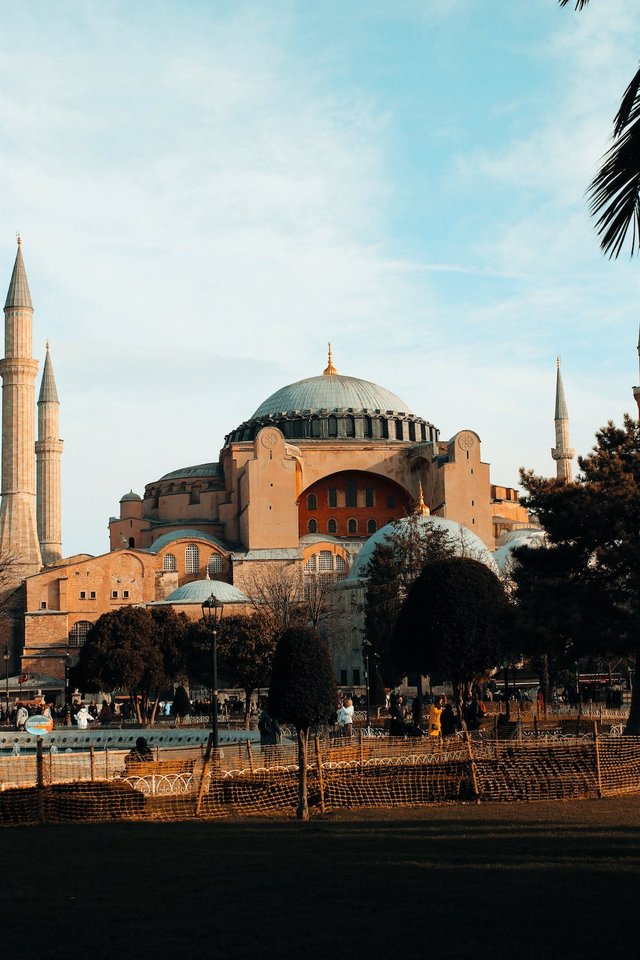
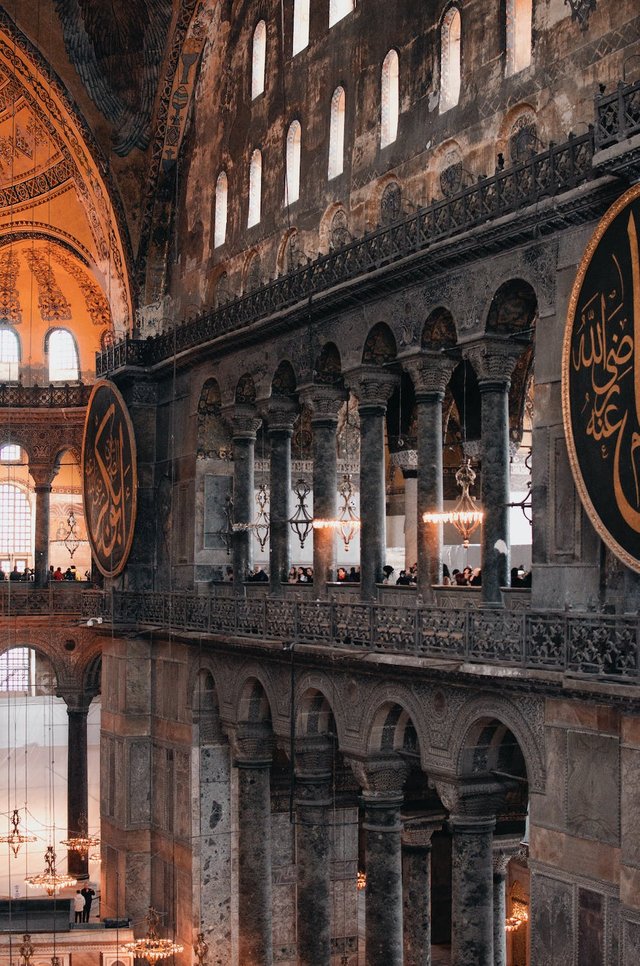
The construction of the Hagia Sophia Church was initiated by the Roman emperor Constantine I, who declared Christianity the official religion of the empire. The son of Constantine the Great, who was on the throne between 337 and 361, II. It was completed by Constantius and the opening of the Hagia Sophia Church was completed on February 15, 360 by II. It was carried out by Constantius.[19] It is learned from the records of Socrates Scholasticus that the first Hagia Sophia, decorated with silver-covered curtains, was built on the Temple of Artemis.[8]
The name of the first Hagia Sophia, whose name means "Great Church", was Magna Ecclesia in Latin and Megálē Ekklēsíā (Μεγάλη Ἐκκλησία) in Greek.[8] There is no remnant of this structure, which is stated to have been built on an old temple[20].
The First Hagia Sophia was built close to the imperial palace (formerly the northern part of the museum area, close to the new toilets, closed to visitors) near the Hagia Irene Church, which functioned as a cathedral until the building was completed. Both churches operated as the two main churches of the Byzantine Empire.
The First Hagia Sophia was a traditional Latin architectural style columnar basilica with a wooden roof and an atrium in front of it. Even this first Hagia Sophia was an extraordinary structure. On 20 June 404, after the Patriarch of Constantinople Saint John Chrysostomos was exiled due to a conflict with the wife of Emperor Arcadius, Empress Aelia Eudoxia, this first church was burned and destroyed during the riots.
Second Hagia Sophia
Frontal and close-up view of one of the upper marble blocks. Some of the 12 lambs representing the 12 apostles and the tree of life symbol can be seen on the relief on the block.
After the first church was burned and destroyed during the riots, the emperor II. Theodosius ordered a second church to be built on the site of today's Hagia Sophia, and the opening of the Second Hagia Sophia took place in his time, on October 10, 415.[18] This Second Hagia Sophia, built by the architect Rufinos, had a basilica plan, wooden roof and five naves. It is thought that the Second Hagia Sophia hosted the Second Ecumenical Council, the First Istanbul Council, in 381, together with Hagia Irene.[21] This structure was burned down during the Nika Revolt on 13-14 January 532.[9][22]
In 1935, many finds belonging to this Second Hagia Sophia were uncovered during the excavations carried out by A. M. Schneider of the German Archaeological Institute in the western courtyard of the building (at the present entrance). These finds, which can be seen next to the main entrance of Hagia Sophia and in the garden, are portico ruins, columns, capitals, marble blocks, some of which are embroidered with reliefs. It has been determined that these are parts of the triangular pediment that used to adorn the facade of the building. Lamb reliefs on a block adorning the facade of the building were made to represent 12 apostles. In addition, excavations have revealed that the floor of the Second Hagia Sophia is two meters lower than the floor of the Third Hagia Sophia. Although the length of the Second Hagia Sophia is not known, its width is thought to be 60 m.[8](Today, the floor on which the steps of the facade stairs of the Second Hagia Sophia, located next to the main entrance of the Third Hagia Sophia, rested, can be seen thanks to the excavations. not continued.)
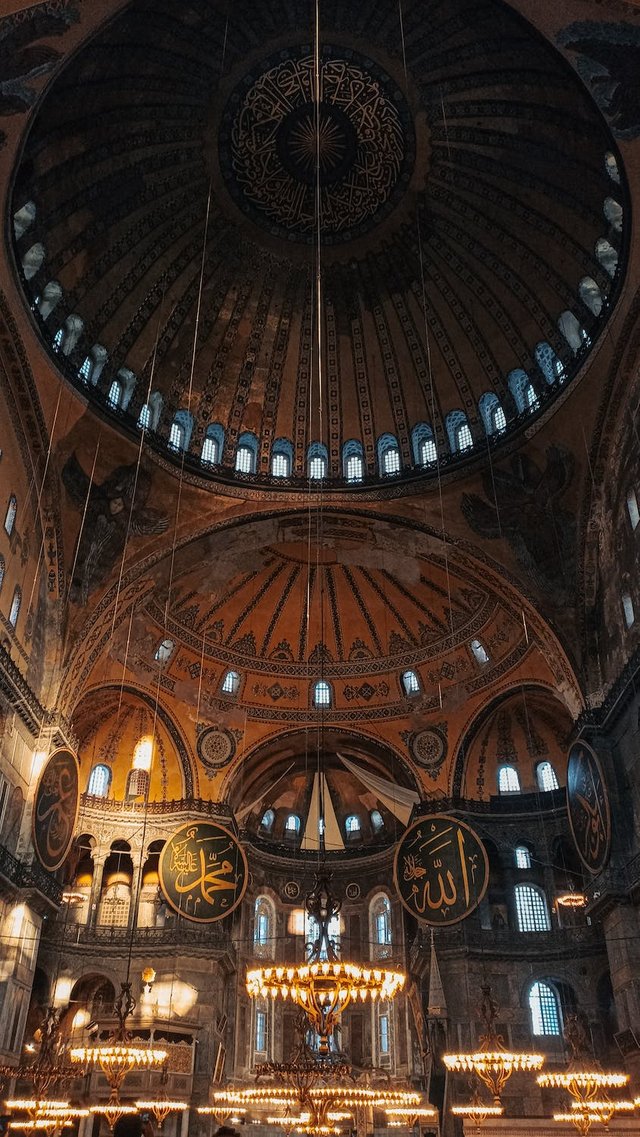
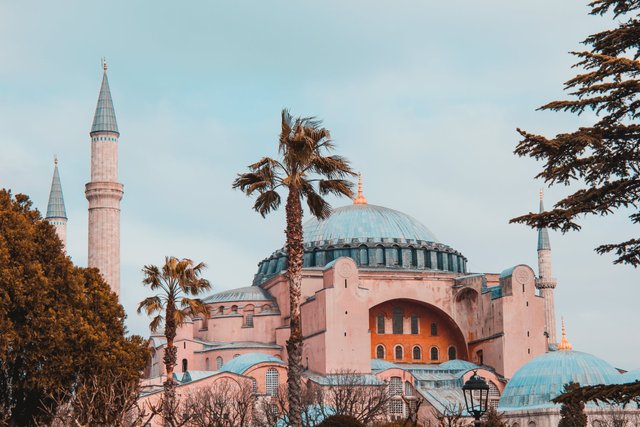
A few days after the destruction of the Second Hagia Sophia on February 23, 532, Emperor Justinian I decided to build a church that was completely different from the previous one, bigger and much more magnificent than the churches built by the emperors before him. Justinian commissioned the physicist Isidore of Miletus and the mathematician Anthemius of Tralles as architects to do this work. According to a legend, Justinian did not like any of the drafts of the church he was going to build. One night, Isidoros falls asleep while trying to draft. When he wakes up in the morning, he finds a prepared plan of Hagia Sophia in front of him. Justinian finds this plan perfect and orders Hagia Sophia to be built accordingly. According to another legend, Isodoros saw this plan in his dream and drew the plan as he saw it in his dream. (As Anthemius died in the first year of construction, Isidoros continued the work). The construction is described in the Byzantine historian Procopius's buildings of Justinian (Greek: Περί Κτισμάτων, Latin: De Aedificiis, "On Buildings").
Instead of producing the materials to be used in construction, it was preferred to use the ready-made carved materials in the buildings and temples in the imperial lands. This method can be considered as one of the factors that made the construction period of Hagia Sophia very short. Thus, columns brought from the Temple of Artemis in Ephesus,[14] the Temple of the Sun (Heliopolis) in Egypt,[14] the Temple of Baalbek in Lebanon,[15] and many other temples were used in the construction of the building. It is not known how these columns were transported by the means of the sixth century. Among the colored stones used in pavements and columns, red porphyry originates from Egypt, green porphyry from Greece, white marble from Marmara Island, yellow stone from Syria and black stone from Istanbul.[23] In addition, stones from various regions of Anatolia were used.[17] It is stated that more than ten thousand people worked in the construction. At the end of the construction, the Hagia Sophia Church took its present form.
Locations of important buildings in the city center during the Byzantine period
Showing a new understanding in architecture, this church was immediately recognized as one of the masterpieces of architecture as soon as it was built. It is possible that the architect used the theories of Heron of Alexandria to construct a huge dome capable of providing such a large open space.
The construction work, which started on December 23, 532, was completed on December 27, 537. Emperor Justinianus and Patriarch Eutychius opened the church with a great ceremony. Since Hagia Sophia was larger than Solomon's Temple, which was considered the largest building up to that time, Emperor Justinian I (Justinian) said in his opening speech to the public, "O Suleyman! I have defeated you".[24] The construction of the first mosaics of the church, between 565 and 578, II. It was completed during the Justinian period. The light plays on the mosaics on the walls, created by the lights leaking from the windows of the dome, combine with the ingenious architecture, giving the audience a fascinating atmosphere. Hagia Sophia had such a fascinating and profound effect on foreigners who came to Istanbul that those who lived in the Byzantine period described Hagia Sophia as "the only one in the world" ("singulariter in mundo").[25]
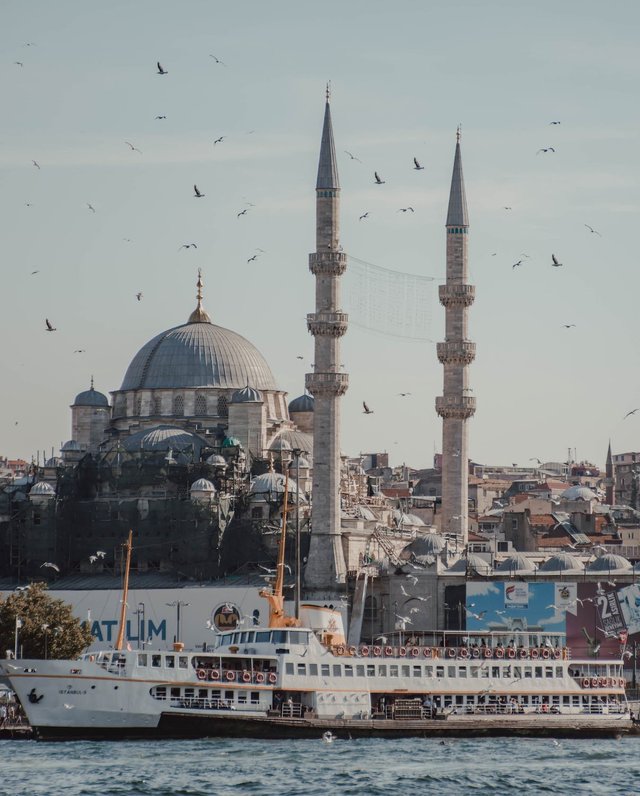
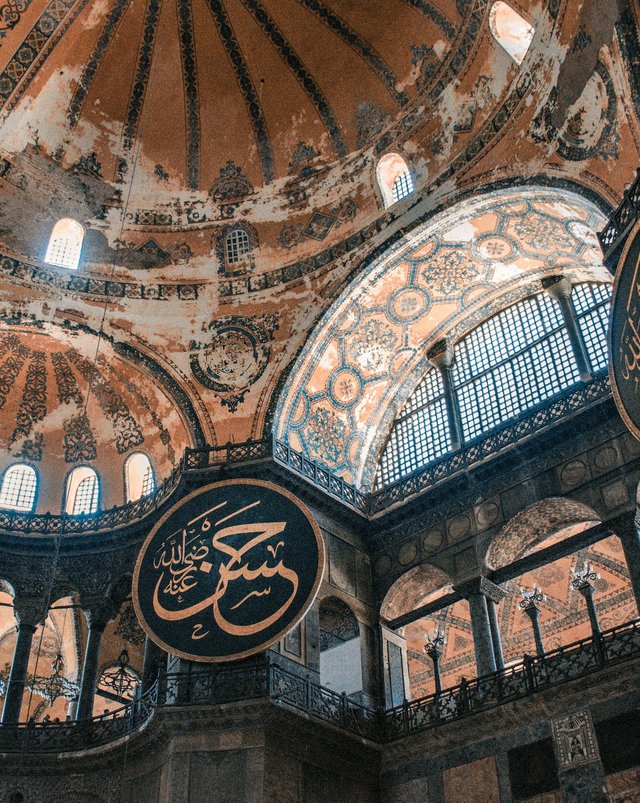
However, shortly after its construction, cracks appeared in the 553 Gölcük and 557 Istanbul earthquakes in the main dome and the eastern half dome. In the earthquake of May 7, 558, the main dome completely collapsed and the first ambon, siborium and altar were also crushed and destroyed. The emperor immediately started the restoration work and appointed the young Isidorus, the nephew of Isidoros of Miletus, to head this work. Taking lessons from the earthquake, light materials were used in the construction of the dome so that it would not collapse again this time, and the dome was built 6.25 m higher than before.[26] Restoration work was completed in 562.
Hagia Sophia, which was the center of the Eastern Orthodox patriarch of Constantinople for centuries, also hosted imperial ceremonies such as the coronation ceremonies of Byzantium. Emperor VII. In his book titled "The Book of Ceremonies" (De caerimoniis aulae Byzantinae), Konstantinos describes the ceremonies held in Hagia Sophia by the emperor and the patriarch in all details. Hagia Sophia has also been a place of refuge for sinners.
Among the later destructions of Hagia Sophia are the fire of 859, the earthquake of 869, which caused the fall of one half dome, and the earthquake of 989, which damaged the main dome. After the 989 earthquake, the emperor II. Basil had the dome repaired by the Armenian architect Trdat, who built the great churches in Agine and Ani.[27] Trdat repaired part of the dome and the western arch, and the church was reopened to the public in 994 after 6 years of repair work.
Latin invasion period
Symbolic inscription commemorating Venetian Doge Enrico Dandolo during the Latin Invasion
During the Fourth Crusade, the Crusaders under the command of Enrico Dandolo, the Associate Professor of the Republic of Venice [note 3], captured Istanbul and plundered Hagia Sophia. This event is learned in detail from the pen of the Byzantine historian Nikitas Choniatis.
Many holy relics and valuables made of gold and silver were stolen from the church, such as a piece of Joshua's tombstone, the shroud of Turin, the milk of the Virgin Mary and the bones of the saints, and even the gold on the doors was removed and taken to the western churches. In this period, known as the Latin Invasion (1204-1261), Hagia Sophia was transformed into a cathedral affiliated with the Roman Catholic Church. On May 16, 1204, the Latin emperor Baudouin wore the imperial crown in Hagia Sophia.
The tombstone of Enrico Dandolo is in the upper gallery of Hagia Sophia. During the 1847-1849 restoration carried out by Gaspare and Giuseppe Fossati, it was revealed that the tomb was not a real tomb, but was placed as a symbolic plaque in memory of Enrico Dandolo.


Late Byzantine period
When Hagia Sophia was again under the control of the Byzantines in 1261, it was in a state of ruin, devastation and collapse. Emperor II in 1317. Andronikos financed it from the legacy of his deceased wife, Irene, and had 4 retaining walls (Medieval Greek: Πυραμὶδας Piramídas) added to the northern and eastern parts of the building.[28][29] In the 1344 earthquake, new cracks appeared in the dome, and on May 19, 1346, various parts of the building collapsed. After this event, the church remained closed until the restoration work of the architects Astras and Peralta began in 1354.[
After the conquest of Istanbul by the Ottoman Turks in 1453, the Hagia Sophia Church was immediately converted into a mosque as a symbol of the conquest. At that time, Hagia Sophia was in a dilapidated state. This situation is described by Western visitors such as Cordoba nobleman Pero Tafur[30] and Florentine Cristoforo Buondelmonti[31]. Fatih Sultan Mehmed, who gave special importance to Hagia Sophia, ordered the church to be cleaned immediately and turned into a mosque, but he did not change its name. The first minaret was built during his reign. Although the Ottomans preferred to use stones in such structures, this minaret was made of brick in order to be able to build the minaret quickly. [note 4] One of the minarets was Sultan II. Added by Bayezid. In the 16th century, Suleiman the Magnificent had two giant oil lamps brought to Hagia Sophia from a church in Hungary that he conquered, which today are located on both sides of the altar.
II. During the Selim period (1566-1574), when it showed signs of fatigue or instability, the building was reinforced with external retaining structures (struts) added by the Ottoman chief architect Mimar Sinan, who is considered one of the world's first earthquake engineers.[32] Today, a total of 24 buttresses on all four sides of the building belong to the Ottoman period and some to the Eastern Roman Empire period. Along with these retaining structures, Sinan also strengthened the dome by feeding the spaces between the piers carrying the dome and the side walls with arches [note 5] and added two large minarets (to the west), the sultan's lodge and the II. He added Selim's tomb (in the southeast part) (1577).[18] III. Murad and III. Mehmed's tombs were added in the 1600s.
Other structures added to the Hagia Sophia building during the Ottoman period include the marble pulpit, the gallery opening to the sultan's mahfil, the muezzin's mahfili (mawlid balcony), and the sermon lectern. III. Murad, who was found in Bergama, placed two jars made of "gooseberry" (Eng. alabaster) [note 6] from the Hellenistic Period (IV century BC) in the main nave (main hall) of Hagia Sophia. Mahmud I ordered the building to be restored in 1739 and added a library and a madrasah, an almshouse and a fountain next to the building (in its garden). Thus, the Hagia Sophia building, together with the surrounding structures, turned into a social complex. A new sultan's gallery and a new mihrab were also built during this period.

One of the most famous restorations of Hagia Sophia in the Ottoman period was made between 1847 and 1849 by the order of Sultan Abdülmecid, under the supervision of Swiss Italian Gaspare Fossati and his brother Giuseppe Fossati.[28] The Fossati brothers strengthened the dome, vault and pillars and reworked the interior and exterior decoration of the building. Some of the gallery mosaics on the upper floor were cleaned, the heavily damaged ones were covered with plaster and the mosaic motifs below were painted on this plaster.[note 7] The oil lamp chandeliers providing the lighting system were renewed. Giant round tables, the work of Kazasker Mustafa Izzed Efendi (1801-1877), in which important names[note 8] were written in calligraphy, were renewed and hung on columns. A new madrasah and timetable were built outside of Hagia Sophia. The minarets were brought to the same color. When this restoration work was completed, the Hagia Sophia Mosque was reopened to the public with a ceremony held on 13 July 1849. [note 9] Other structures of the Hagia Sophia complex during the Ottoman period include the primary school, the tomb of the princes, the public fountain, the tomb of Sultan Mustafa and Sultan Ibrahim (formerly the baptistery[note 10]). ) and the treasury.
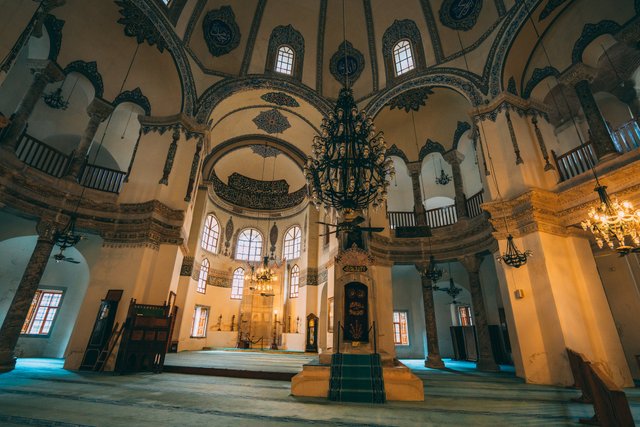
So it is true that Ἁγία Σοφία has now been converted into a mosque.
Downvoting a post can decrease pending rewards and make it less visible. Common reasons:
Submit
this is true
Downvoting a post can decrease pending rewards and make it less visible. Common reasons:
Submit